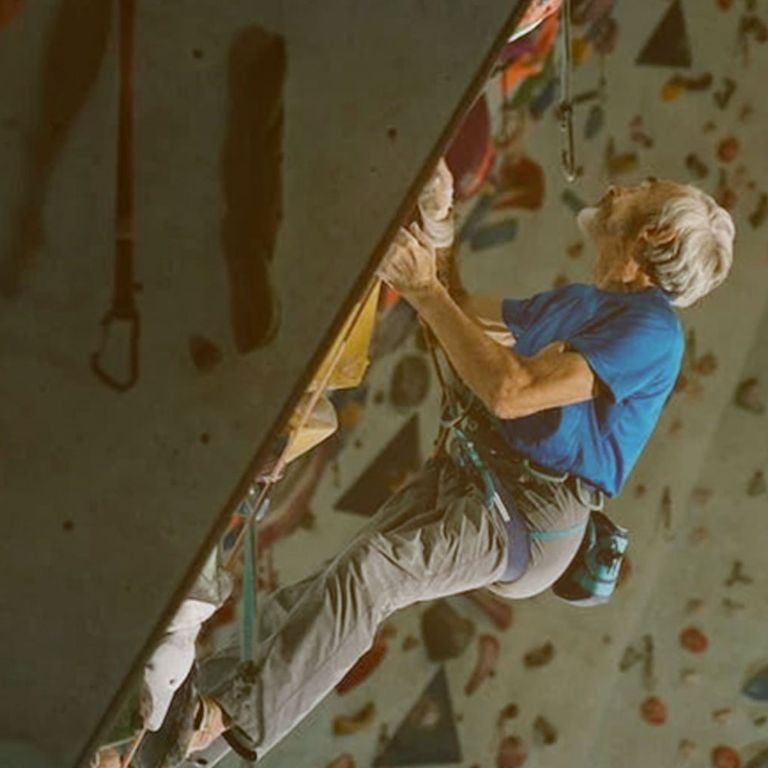Short answer: It could improve posture.
“Parkinson's disease (PD) is a progressive disorder that affects the nervous system and the parts of the body controlled by the nerves. Symptoms start slowly. The first symptom may be a barely noticeable tremor in just one hand. Tremors are common, but the disorder may also cause stiffness or slowing of movement.”1 In addition, one common observation is poor posture, specifically a stooped and forwarded headed resting and working position.
Sound familiar? This is what potentially makes this article relevant to you and me.
Posture will naturally degrade with age; and PD is will naturally progress further. To me, this doesn’t mean that preventive measures shouldn’t be taken. Slowing down the natural process may have positive benefits to the mental, emotional, and physical well-being of individuals. In any conversation, poor posture can affect our confidence negatively. In the long run, and more importantly, it can affect the quality of movement thereby affecting our ability to function efficiently. Kung napabayaan (if you let it), it can potentially get worse and worse. There are the lucky few that can go without having to do anything…but I wouldn’t count on it.
So, what can be done? Many postural training exercises can help. However, this article will be focused on discussing the benefits of climbing sports for that goal.
Studies2 show that climbing sports (like wall or rock climbing) have a positive correlation with posture improvement, specifically with patients diagnosed with PD. This is due to the anti-flexion moment (meaning, it goes against the stooped or kuba position) that is observed when climbing. In another study3, the authors observed benefits in speed of movement, tremors, rigidity, and spatial awareness of their subjects. The decrease in tremor was associated with the decrease in stress levels, as was subjectively reported. It’s worth noting that these subjects were at a particular phase of the condition. This, unfortunately, means that not all PD patients may be the best candidate for this kind of treatment. Other treatment options include: Nordic walking, treadmill walking, cycling, and resistance training.
Note: If you don’t know what Nordic walking is, do you remember Phil Dunphy power walking in that episode of Modern Family?
In the first study, the subjects were tasked to complete a total of 90 minutes of exercise per week for a total of 12 weeks, with the no supervision of an instructor. The authors2 concluded that “this immense effect can be explained by the fact that climbing training is a special combination of resistance training, balance, flexibility and coordination training.” The novelty and the camaraderie brought by the group activity seemed to help achieve these benefits.
There are no studies (that I know of) that specifically link climbing sports to posture of individuals without this disease. But if the sport has effects on a person with impairments in the neurological system, what does it mean for healthy brains?
Disclaimer: Information from this blog is not intended to be as a resource used for self-help or self-diagnosis. The information posted should be regarded as general information based on what Isabel Sison deems as reliable. She does not endorse this information as a substitute to formal medical consultation and treatment. Any change in the information is possible without prior notice.
References
1 Mayo Clinic. (2022). Parkinson’s disease. https://www.mayoclinic.org/diseases-conditions/parkinsons-disease/symptoms-causes/syc-20376055
2 Anderson, P. (2022). Sport climbing tied to improved posture in Parkinson's disease. Medscape. https://www.mdsabstracts.org/abstract/climb-up-head-up-climbing-improves-posture-in-parkinsons-disease-a-randomised-controlled-trial/
3 Langer, A., Hasenauer, S., Flotz, A., Gassner, L., Pokan, R., Dabnichki, P., Wizany, L., Gruber, J., Roth, D., Zimmel, S., Treven, M., Schmoeger, M., Willinger, U., Maetzler, W., & Zach, H. (2021). A randomised controlled trial on effectiveness and feasibility of sport climbing in Parkinson's disease. NPJ Parkinson's disease, 7(1), 49. https://doi.org/10.1038/s41531-021-00193-8







.png)

